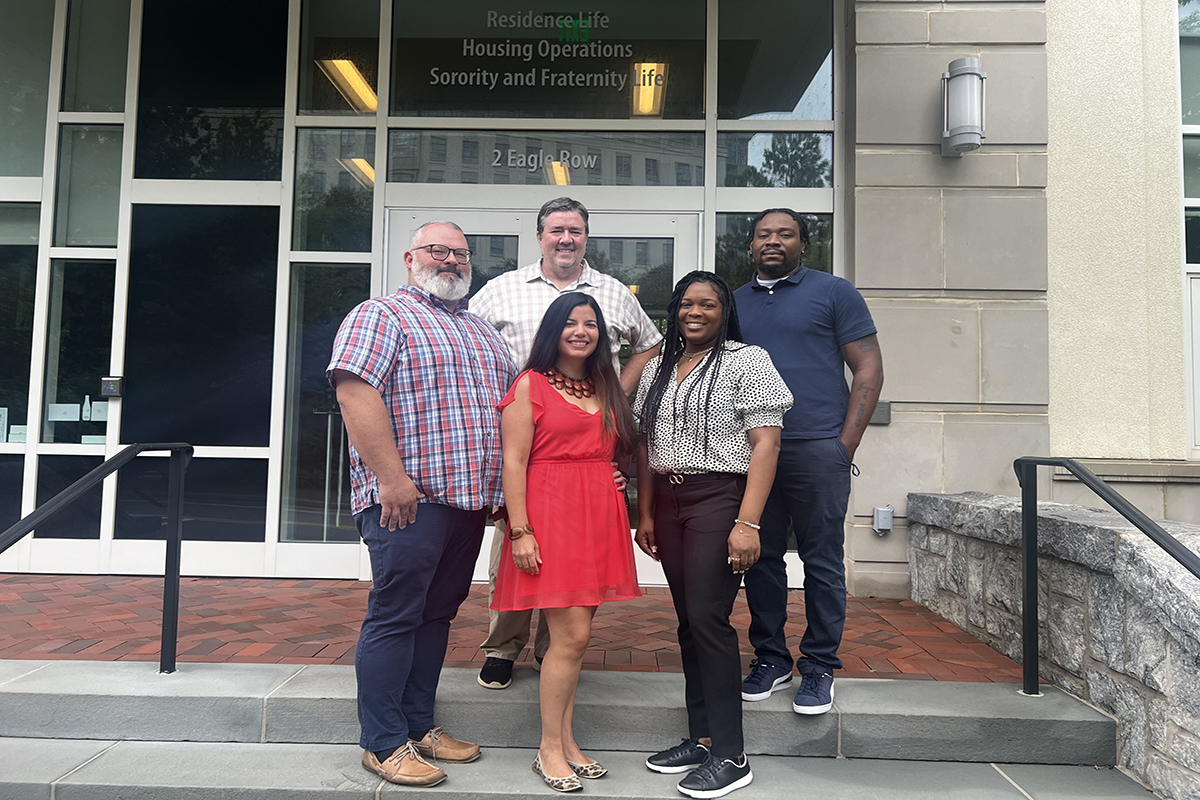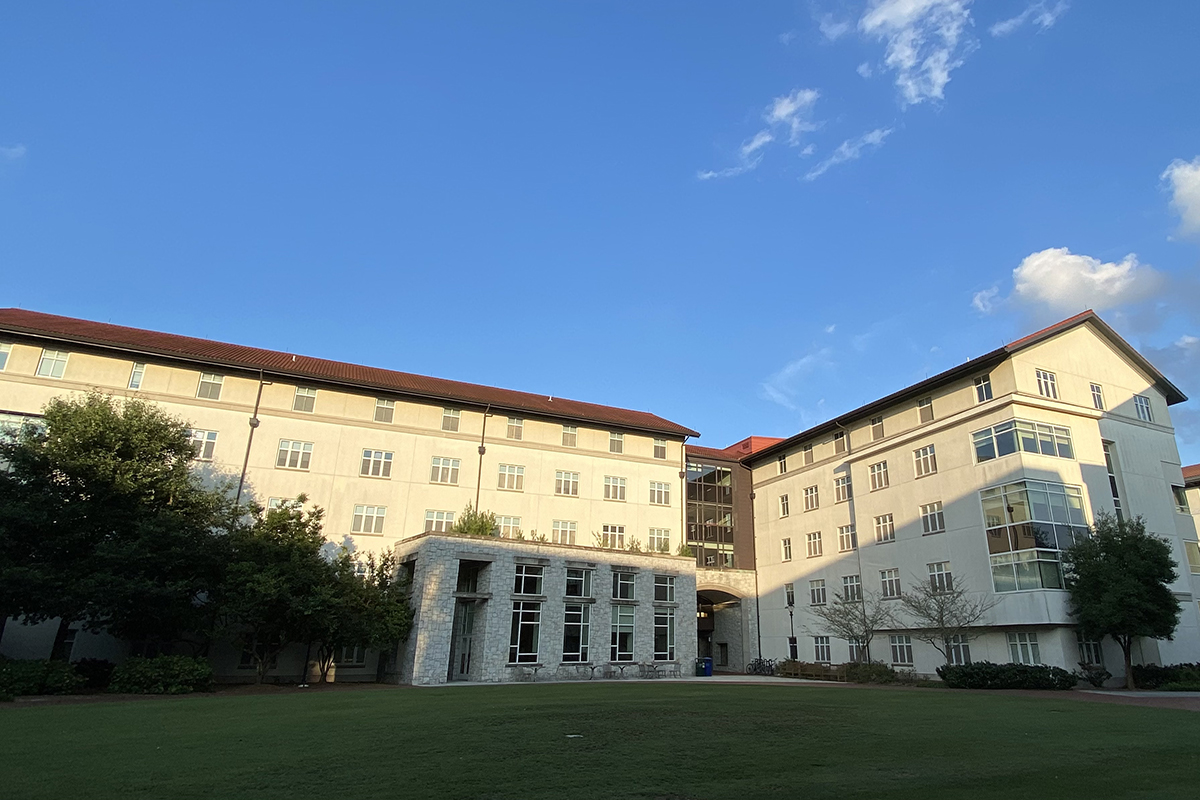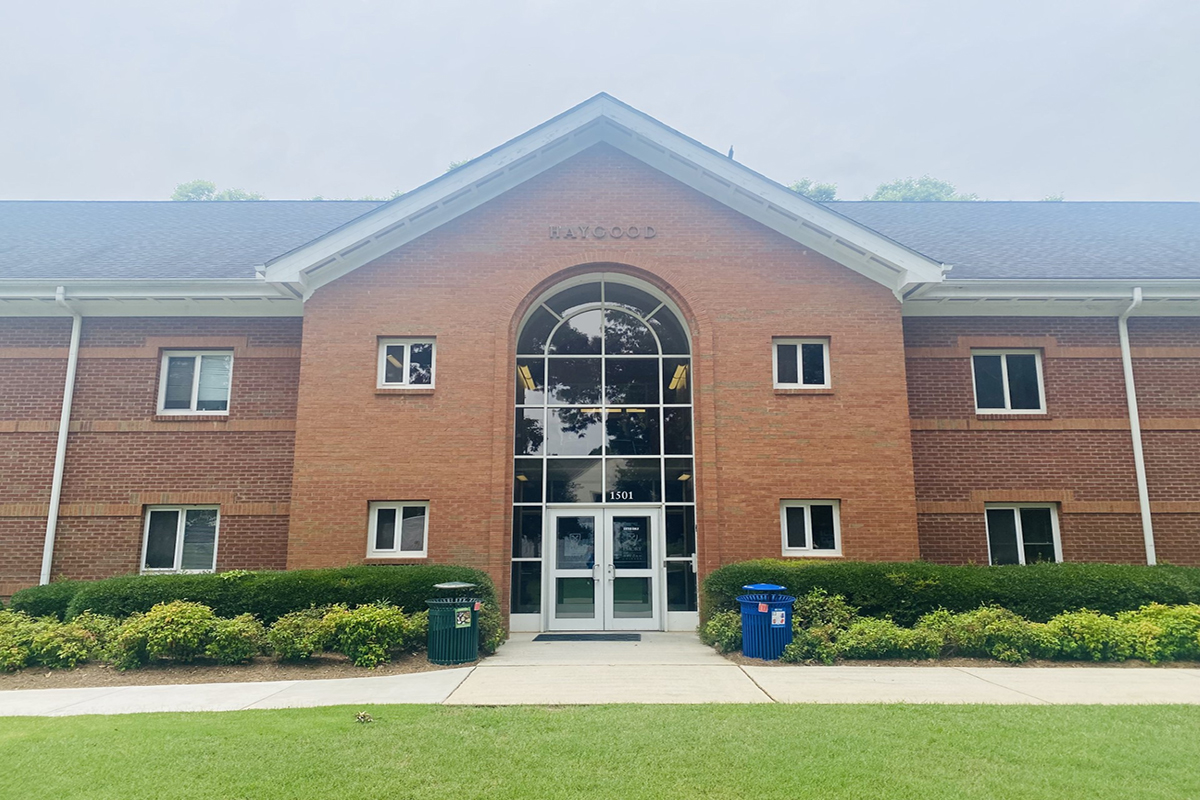When students move out of Emory’s residence halls each May, the hustle and bustle of campus gives way to a quieter, slower pace. But while students may have just returned to their campus homes to get ready for classes starting this week, the residence halls were anything but empty over the summer.
With most students gone for the summer, staff were able to get back inside those rooms — and the housing operations team, along with their partners across campus, were in and out of each room nearly a dozen times, cleaning, making upgrades, readying each space for move-in and more.
The teams had roughly 13 weeks to make any repairs and overhauls happen, all while juggling camps that depend on Emory’s summer housing, before students returned to call Emory home.
Building three unique campuses
Operating on three campuses and managing nearly 5,500 beds may conjure visions of a robust team. In actuality, the team is smaller than many people expect, with each staff member wearing multiple hats to keep the Atlanta, Oxford and Clairmont campuses running.
Each campus serves a unique purpose — and student population. The Oxford campus is home to first- and second-year students, who then transfer to the Atlanta campus in their third year.
“I love seeing the growth in Oxford students between when they arrive as first years and when they leave. It’s great to see how they’re able to evolve into themselves and figure out the path they really want to go on,” says Jamal Chavous, assistant director of residential education on the Oxford campus.
Heather Blount, administrative assistant for residential education and services, also feels that deep sense of community at Oxford. “We’re a huge part of students’ lives at this critical part of their life,” she says. “Everyone here knows everybody’s names. It’s community-oriented and it’s great being part of that.”
Most of Emory’s first-year students start on the Atlanta campus, primarily housed in residence halls that double as lodging for summer camp participants, and second-year students also live on campus. Housing operations is also in charge of the fraternity, sorority and themed houses on the Atlanta campus. While these houses (and their residents) receive the same services and furniture as residence halls, there are some key differences.
“The houses are a lot smaller than our residence halls and often have a close-knit community there. Many students come back and live in that house for multiple years, so they take a lot of pride in their homes,” says Sussy Vasquez-Perez, assistant director of facilities and operations on the Atlanta campus. She and Atlanta campus facilities coordinator Eric Hines work together to ensure that student requests are handled. Even after graduation, Vasquez-Perez says, many alumni return to those houses at events like homecoming.
Meanwhile, third- and fourth-year students can live in apartment-style housing on the Clairmont campus.
“The Clairmont campus has different needs from a facilities standpoint because people are cooking here and we have hundreds of toilets and bathrooms since they’re not shared for the entire hall,” says T.J. Greggs-Edwards, assistant director of facilities and operations on the Clairmont campus. That also means maintenance issues are more likely to arise.
Because the academic year is full of managing problems as they pop up, planning ahead for the summer is crucial.
Making a summer plan
Each team stays in constant communication throughout the year with various campus stakeholders, including planning, design and construction (PDC), residence, fraternity and sorority life, and campus services.
In fact, summer projects start being discussed in late September, says Ray Hébert, director of facilities and operations. Planning includes determining if any buildings will be closed for the summer, where camp attendees will stay, and meeting with project managers and designers. By the end of November, as much as possible has been determined so that staff can hit the ground running in May.
“Summer includes any major repairs or renovations,” says Greggs-Edwards. “We work with our PDC department to create a plan for the summers and figure out which projects we’re going to tackle, who the project manager will be, timing and other details. During the academic year, we quickly respond to the needs of our students so they are inconvenienced as little as possible.”
Whether it’s summer or classes are in full swing, housing operations focuses on the student experience in everything they do — including renovations.
Creating updated living spaces
Despite COVID-era supply chain snafus and delivery truck shortages, larger projects have abounded in the last few years. With that, the staff has become adept at pivoting.
“Every year, something changes,” says Hébert. “Our plans are constantly evolving and a lot of that is based on our response to everything that’s happening outside the Emory bubble.” For example, if a system suddenly fails and needs to be replaced, the rest of the budget and upcoming projects will be adapted.
“Sometimes when we talk to students about the condition of the facilities, they’re surprised to learn that what we spend most of our budget on is things they can’t see, like HVACs or piping, which are in a mechanical room or behind a wall,” Hébert says. “We have to rotate the more cosmetic things like purchasing common room furniture into the schedule.”
A cosmetic upgrade in Woodruff Residential Center this summer — coordinated by Vasquez-Perez — grew out of a project to change the shower and toilet valves in the semicircle wing. With the bathrooms offline for the summer, the staff decided to refinish the tiles, paint the bathrooms, change the partitions and put in new LED lighting. (Next summer, the remaining bathrooms will receive the same treatment.) On top of those changes, the entire building received new kitchens and hallway carpets.
At Clairmont, facilities coordinator LaShay Brown is working to beautify campus outside the residence halls by coordinating the creation of a mural and additional greenspaces. Plus, she points out, these efforts will provide a backdrop for photos and serve as gathering spaces for out-of-town guests.
Massive projects are happening on the Oxford campus, too. In addition to the recent HVAC restoration in Haygood Hall, the building got new flooring.
“We converted all those spaces to non-carpeted rooms,” says Philip Sullivan, director of residential education and services on the Oxford campus. “We have a lot of students expressing that they have allergies or the preference to live in a non-carpeted space, and we’re hoping this improves the student experience in a lot of ways.”
Bonus: no more worrying about how to get that late-night coffee spill out of the carpet.
Building a community
While their titles may say housing operations, each team member is focused on the residents’ experiences.
“Something that may surprise people is that housing or residence life is really a one-stop shop,” says Sullivan. “Many student needs and concerns come to us first, whether it has to do with housing or academics or student health concerns. We serve as a connection to other resources and offices. And even after that connection is made, we often facilitate the follow-ups and check-ins.”
Brown also values serving as a touchstone for students. “People mostly think we focus on building management. But we’re focused on fostering strong relationships with students and we’re eager to showcase the efforts we made to maintain and enhance the campus,” she says.
“We’re not on the academic side to help with studies, but our jobs help them become better students,” says Vasquez-Perez. “We’re creating a safe and comfortable environment for them. If we do our jobs well, they don’t have to worry about where they live and can focus on other things. We truly want to make this their home away from home.” 3,194 beds on the Atlanta campus 1,356 beds on the Clairmont campus 922 beds on the Oxford campus Did you know?Fast facts about Emory housing






